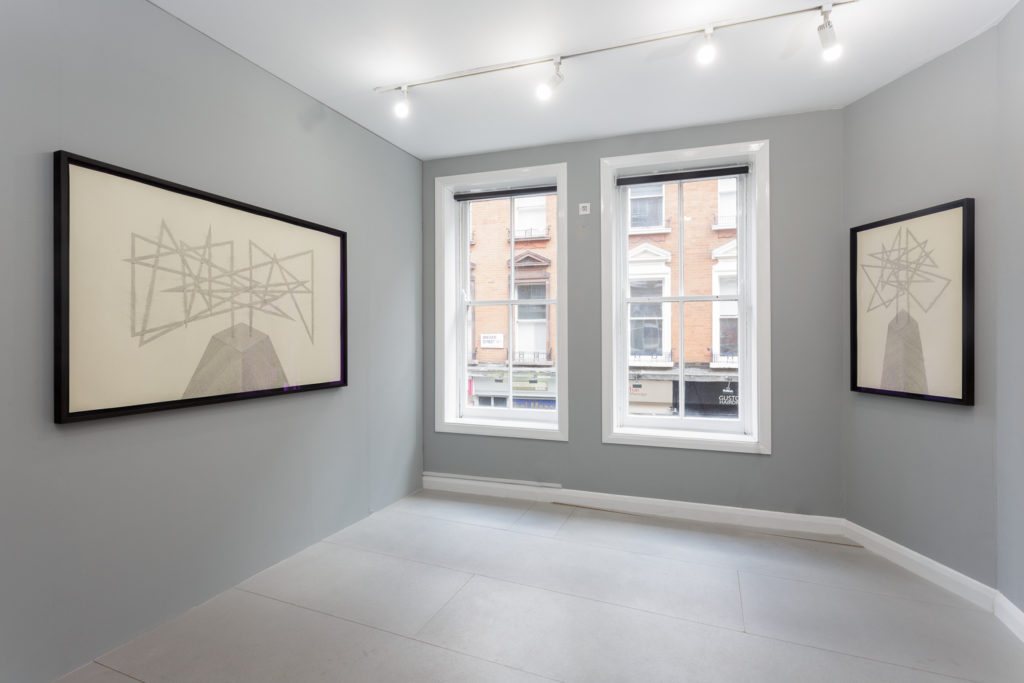
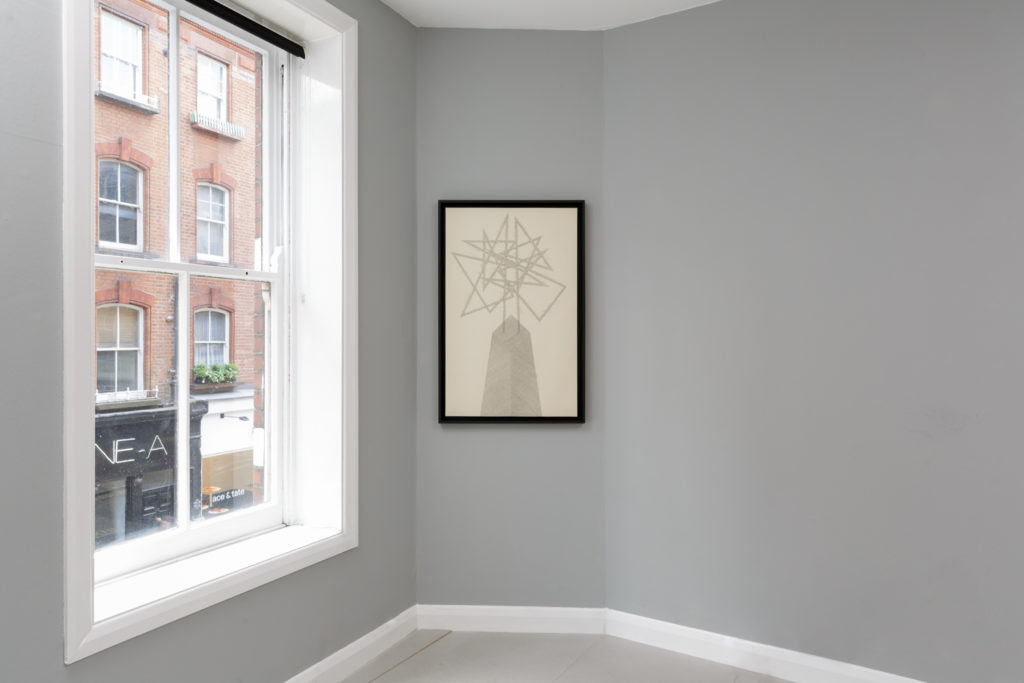
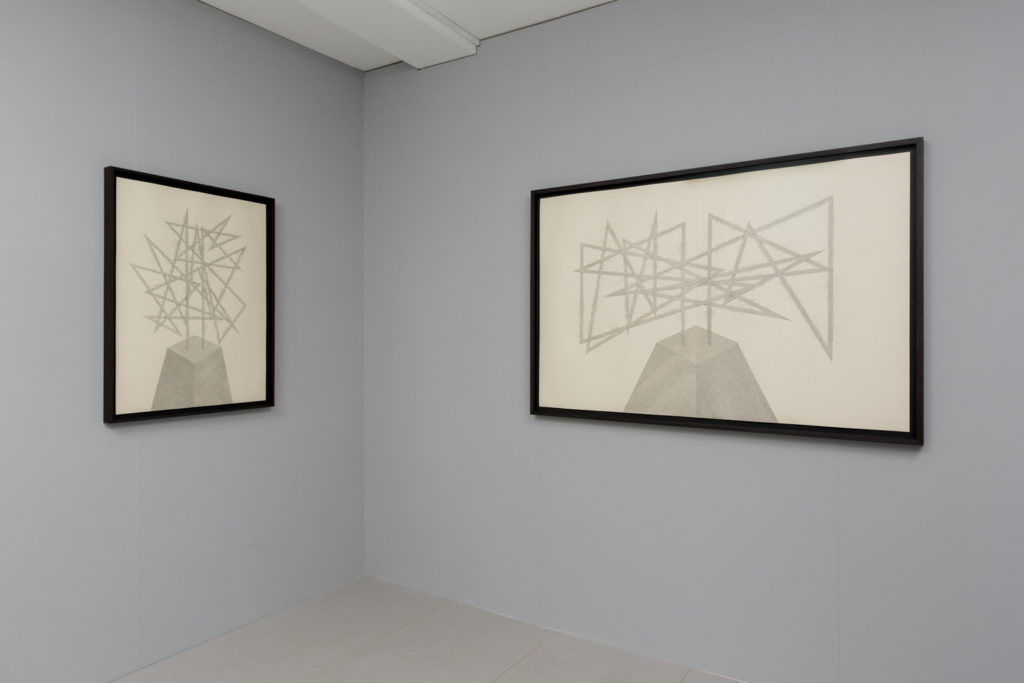
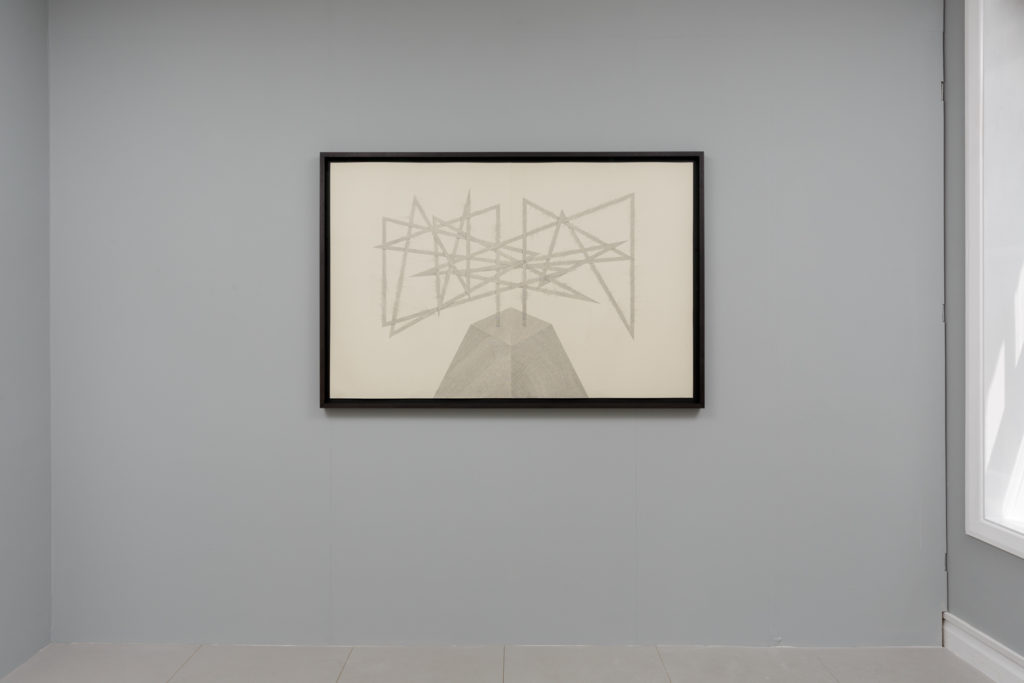
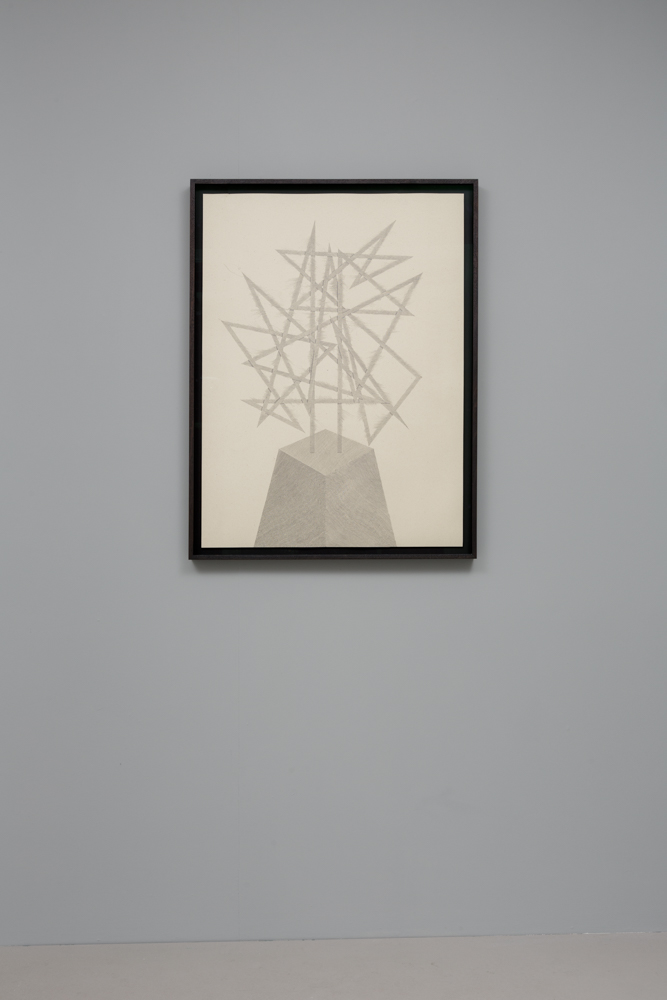
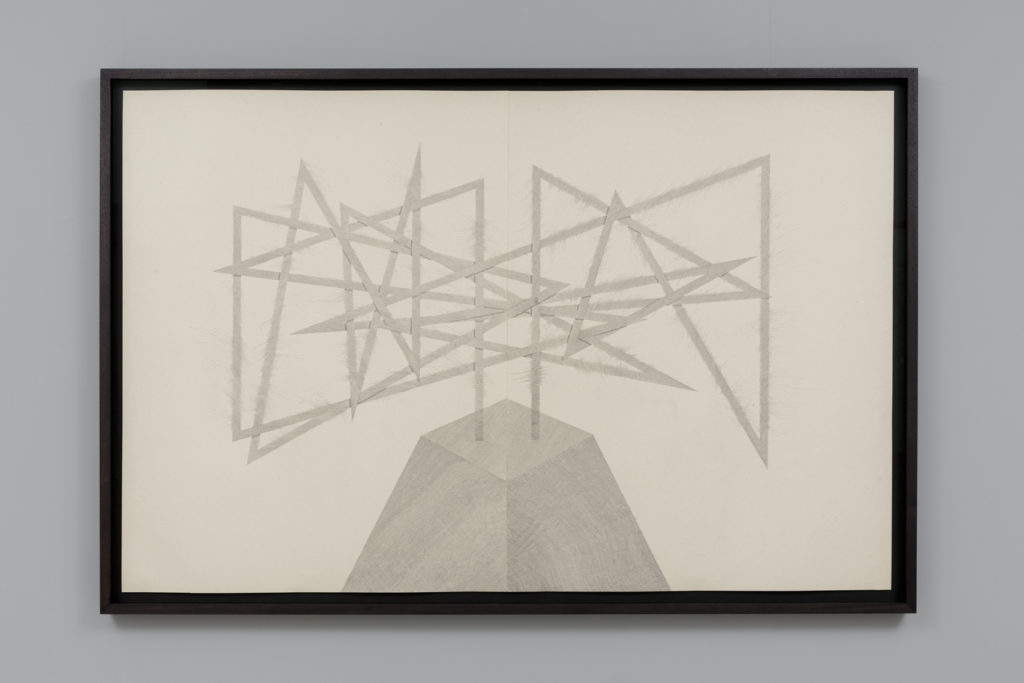
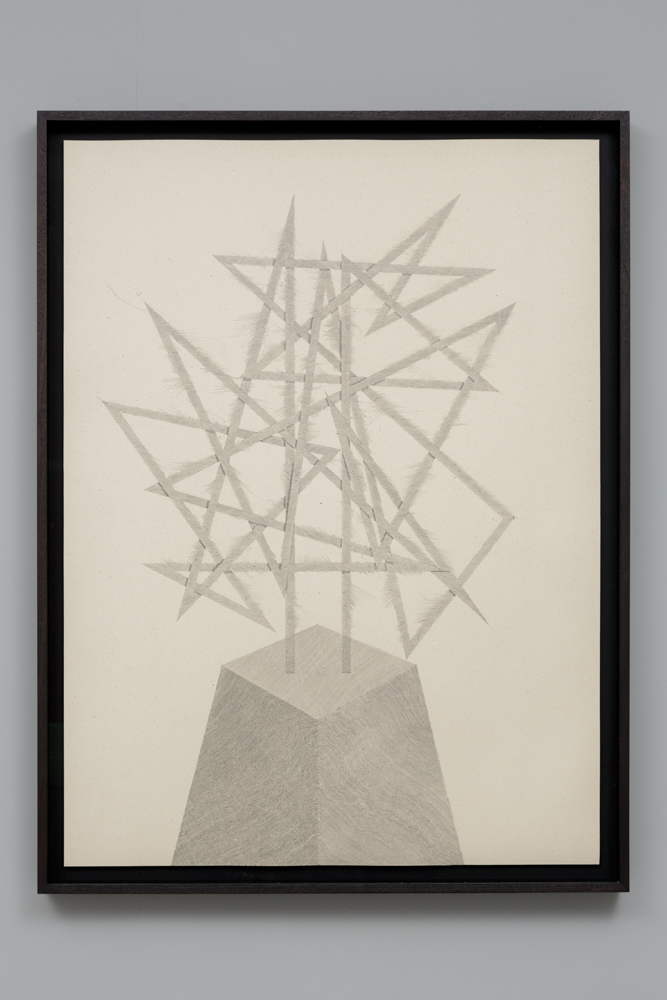


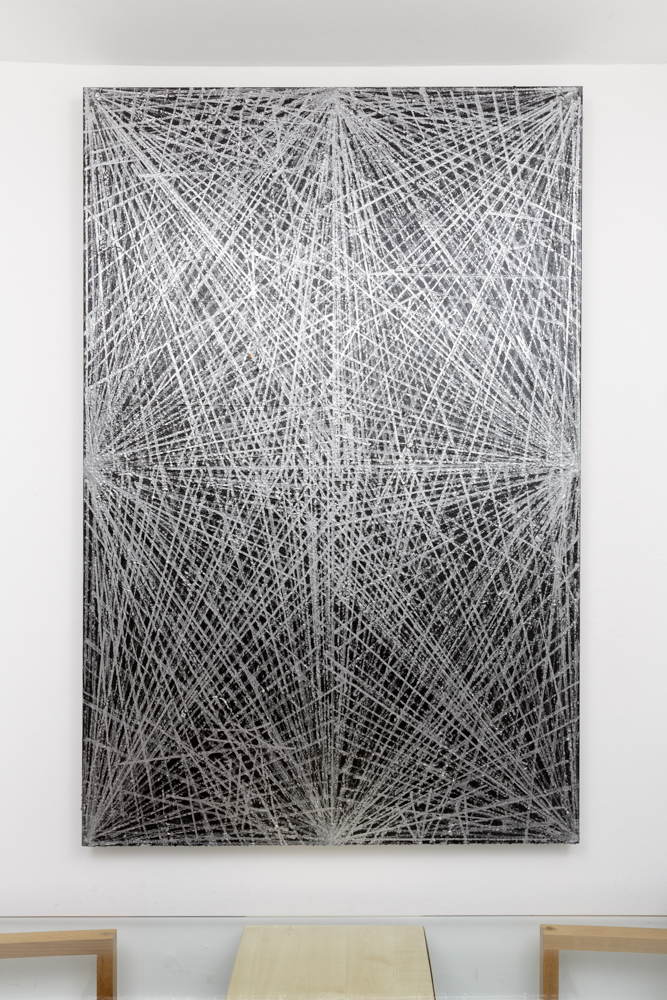
This exhibition of Peter Peri’s works at Arcadia Missa takes it title from Julio Cortazar’s 1960 novel, The Winners, in which a group of “winners” are selected for a journey on a cruise ship. A segment of the ship is closed off from them. Information is withheld and unclear. The ship might not even be moving. Violence breaks out. They return home. A journey reflected in Peri’s drawings? You’re searching for some through line, some explanation, you can see an ending and a beginning, but like Cortazar’s most famous work, Hopscotch, the parts in between are constantly rearranging themselves.
The drawings in The Winners use symmetry as their formal starting point. An enraged but controlled eruption of lines emanating from a plinth at the drawing’s base. These lines are made up of their own lines, close knit ripples of greys that at times escape from the formal strictness of the main lines, overlap each other, diffuse themselves into the surrounding paper. The lines zig zag across the paper before returning to the plinth, parallel to the line that first originated from it.
These are complicated, complex visual works, works that demand substantial planning and attentive execution. Their abrupt and forceful disposition a cover for their own anxious control. And although these drawings begin with an idea of symmetry there’s a certain disharmony to them, the perspective is unrooted, it shifts around like a ship at sea with no horizon to grab onto. The drawings’ strictness and discipline cannot wholly conceal a sense of humour, though. Small faces glimpse out among the lines, disembodied eyes emerging.
What emerges from the symmetry and chaos? Dissolution? Something is born for the sole purpose of its own end. These bizarre trophies have perhaps each become winners in themselves, victorious in their own completion. Each drawing a stand alone object, engaged in its own mirror stage, filled with alienation and repression, harmony and paradox. There’s some quixotic journey of creation in these strict rules the artist sets himself for getting from beginning to end. Frenhofer’s overworked, accidental abstraction. A desire to close some circuit between humanistic representation and the majestic, ungraspable structures of Modernism.
Felix Petty & Rózsa Farkas
Gallery (from left to right):
Slant Moon, 2018
Graphite on unbleached paper
90 × 66.6 cm (35 ⅜ × 26 ¼ inches)
Confreres, 2018
Graphite on unbleached paper
93.6 × 144 cm (36 ⅞ × 56 ¾ inches)
The inhuman, 2018
Graphite on unbleached paper
94.8 × 60 cm (37 ⅜ × 23 ⅝ inches)
Office (from left to right):
Skeleton Painting 1, 2012
Marker pen and spray paint on canvas
175 × 115 cm (68 ⅞ × 45 ¼ inches)
Big Family, 2018
Graphite on unbleached paper
98.4 × 67 cm (38 ¾ × 26 ⅜ inches)